Welcome the next generation of reusable spaceflight.
Orion Technologies proudly presents Eagle 5, our flagship, fully-reusable, next-generation launch vehicle like no other. Its capabilities far surpass those of similar launch vehicles. It boasts technology that is the most advanced yet seen. Let the cosmos be unlocked forever, and Eagle 5 be the key of doing so.
OVERVIEW
Eagle 5 is an advanced, fully reusable launch vehicle, measuring 262ft tall and 14ft wide. Eagle 5 is a two stage rocket, with both a booster and a second stage. Both are capable of returning to the launch site for rapid reuse. The majority of the Eagle 5 structure is made of high-strength carbon composites. Eagle 5 is marketed with the capability to launch up to 38,500 lbs to LEO, in the fully reusable configuration. When completely expended, Eagle 5 can lift more than 42,000lbs to LEO. MEO, GTO, GEO, HEO, SSO, long duration missions, and lunar or destinations beyond are also capable, owing to Eagle 5’s customizable variants. These variants include Eagle 5 Full Reuse(this post), Eagle 5 Partial Reuse, Eagle 5 Expended, and Eagle 5 Crew Phantom. Additionally, we plan to manufacture and launch a larger variant of Eagle 5 to be known as Eagle Heavy, utilizing 3 Eagle 5 boosters. With all of these variants, we and our customers can launch anything, anywhere.
BOOSTER
The Booster of Eagle 5, or the first stage is a vastly capable rocket in itself. It has 7 Talon TR-8 LCH4/LOX full-flow staged combustion rocket engines with regeneratively-cooled nozzles. The first stage as a whole is roughly 160ft tall, and is 14ft in diameter. It has 4, specially-made titanium hypersonic grid fins for atmospheric control during landing. Additionally, 4 carbon fiber slide-rail landing legs assist the reuse of the booster. Boosters will be reused via a landing pad not far from our launch facility. Alternatively, to add some payload capacity, the booster can land on a floating platform(ASDS) in the Gulf of America. To aid stage separation, a pneumatic piston is housed in the interstage. Boosters are given serial numbers starting with B followed by a number greater than 300. After separation, the booster will relight 3 of its 7 TR-8s for the boostback burn. After it endures peak heating, and produces an awesome, but also ear-splitting double sonic boom, the same 3 engines will relight, slowing the booster for landing. Legs will deploy ,and the booster will transition to single engine flight, touching down gently.
SECOND STAGE
The second stage of Eagle 5 is a 52ft tall rocket that separates roughly 2 minutes into flight from the booster. The second stage uses much of the same technology seen on the first stage. Unlike many competitors, the second stage is capable of reuse, coming from its payload deployment orbit(PDO), sailing through re-entry, and landing gently on a pad not far from our launch facility. The stage is 14ft in diameter, and utilizes a vacuum-optimized Talon engine, known as the Talon-Vac, or T-VAC for short. After fairing separation, the stage will deliver the payload into orbit. After payload separation, the stage will make up to 5 full orbits before lighting its T-VAC, sending the vehicle on a sub-orbital trajectory. The PAF will then be jettisoned, exposing the heatshield. Re-entry will occur, behind the heatshield, with control being achieved with our ground-breaking RCS technology. The same hypersonic grid fins will deploy guiding the second stage with precision accuracy to the pad. Upside down, the 4 TRL-97 retro rockets will light just prior to touch down, slowing the craft even further, and then the 4 landing legs will deploy, resting the Eagle 5 second stage gently on a pad, upside down. Second stage serial numbers are given with an S followed by a number greater than 1000.
FAIRING
Our carbon-composite fairing is the tip of the spear, or rocket rather. It is about 50ft tall, and 18ft in diameter(making it compatible with Vulcan-Centaur and Atlas V). It separates shortly after the second stage does so with the first stage. Fulfilling our promise of full-reusability, we plan to eventually reuse the fairing via parachutes.
CONCLUSION
With Eagle 5, you can go anywhere in the solar system. With its very configurable design, advanced tech, and novel reuse systems, Eagle 5 is a stepping stone to humanity’s future in space.
INSTRUCTIONS
AG1: All Talons(6 booster engines in outer ring)
AG2: Boostback Talons(2 hidden engines for boostback and landing)
AG3: Landing Talon(center engine)
AG4: Grid Fins(both stage’s)
AG5: Landing Legs(both stage’s)
AG6: Talon-Vac(second stage main engine)
AG7: TRL-97s(second stage landing engines, remember to de-activate AG6 prior to use)
AG9: Pneumatic Pusher(stage separation mechanism)
AG10: RCS(obvious)
Liftoff, press AG 1 and AG 3. Get to 20% fuel in booster, and at a 50 degree angle. Press AG 9 or Stage 2 for stage separation. Switch to either the booster or second stage. For booster: deactivate AG1, and activate AG2, put booster in a retrograde attitude, and activate RCS(AG10). Do the boostback burn, until you reach 15%-7% remaining. Deploy grid fins(AG4). Begin the primary landing burn at around 15,000 meters AGL. When lowed to about 50m/s, deactivate AG2. At around 50 meters, deploy landing legs(AG5). Land gently(or not). For second stage: after stage separation, either activate AG6 or Stage 3 and 4. Lower the attitude to 40-30 degrees, slowly lowering as you reach the apogee. Separate the fairing shortly after stage separation. Once in the desired orbit, separate the second stage from the payload. For second stage reuse: wait till about 80 degrees from the landing pad. Retrograde the second stage and turn on the T-VAC to deorbit. Deactivate AG6. Activate AG7. Separate the PAF(Stage 7). Set attitude to prograde. Re-enter, without touching attitude controls. Deploy grid fins(AG4) at high altitude. Second stage should be upside down. Once at 10,000 meters AGL, preform the landing burn, not slowing to less than 10m/s. Deploy the landing legs(AG5) and slow completely for a gentle touchdown(or not, your choice).
WHY DID I POST ANOTHER EAGLE 5 FULL REUSE?
So, the reason why i can crank out so many high-quality designs is because I am an aerospace engineer-wannabe. I spend hours each day sitting at a desk sketching out cool designs and blueprints for rockets/space probes. Anyways, when I designed Eagle 5 on paper, all of the dimensions were correct. However, due to complications in the game, when I originally created Eagle 5 and posted it, it was about 80% the actual size and was grossly inadequate for reaching orbit, even without a payload. Thus, I have gone back through and done a complete overhaul of the design, making it more accurate, efficient, and less expensive, while also giving it a much higher payload capacity than before. Additionally, for our near-term projects that require Eagle 5’s success, this overhaul sets the stage for Eagle Heavy, Eagle 5 Crew Phantom, Eagle 5 Obsidian, and Eagle 5 Astreaus.
ACKNOWLEDGMENTS
Thanks to @Probeyene for the booster grid fins
Thanks to @OlympusAerospace for the second stage grid fins
Thanks to @TheQiqi’s JNO Toolset for the amazing logos
Thanks to @HermesAerospace for their payload for this post
If there are any problems with Eagle 5, notify me in the comments below. I will do my best to reply and fix the problem as quick as i can.
There is still more to come, and as always, Enjoy!
GENERAL INFO
- Created On: iOS
- Game Version: 1.3.204.1
- Price: $242,919k
- Number of Parts: 617
- Dimensions: 81 m x 6 m x 6 m
PERFORMANCE
- Total Delta V: 9.7km/s
- Total Thrust: 22.0MN
- Engines: 15
- Wet Mass: 5.07E+5kg
- Dry Mass: 1.13E+5kg
STAGES
| Stage | Engines | Delta V | Thrust | Burn | Mass |
|---|---|---|---|---|---|
| 1 | 7 | 3.6km/s | 13.3MN | 83s | 5.07E+5kg |
| 2 | 1 | 2m/s | 423kN | 1s | 1.42E+5kg |
| 3 | 1 | 5.7km/s | 2.4MN | 2.7m | 1.42E+5kg |
| 6 | 4 | 433m/s | 2.4MN | 23s | 1.37E+5kg |

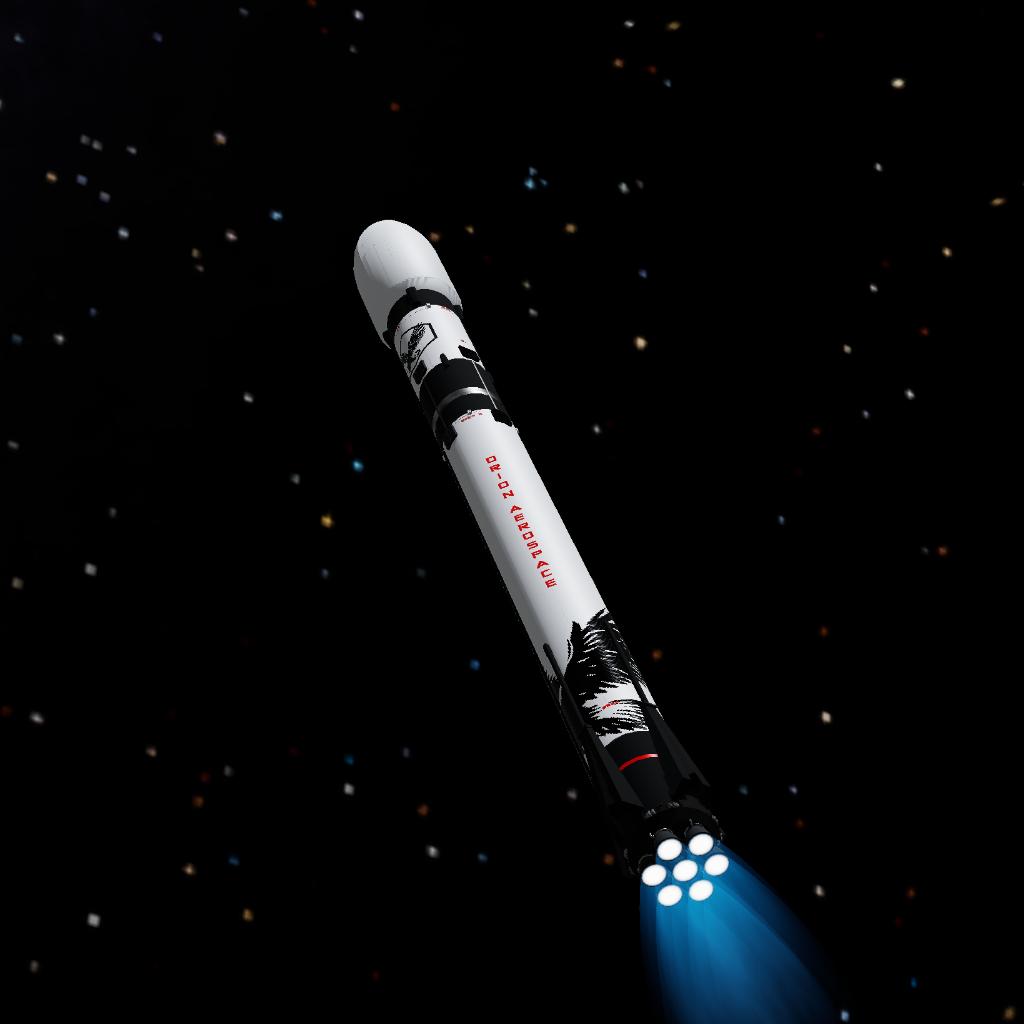
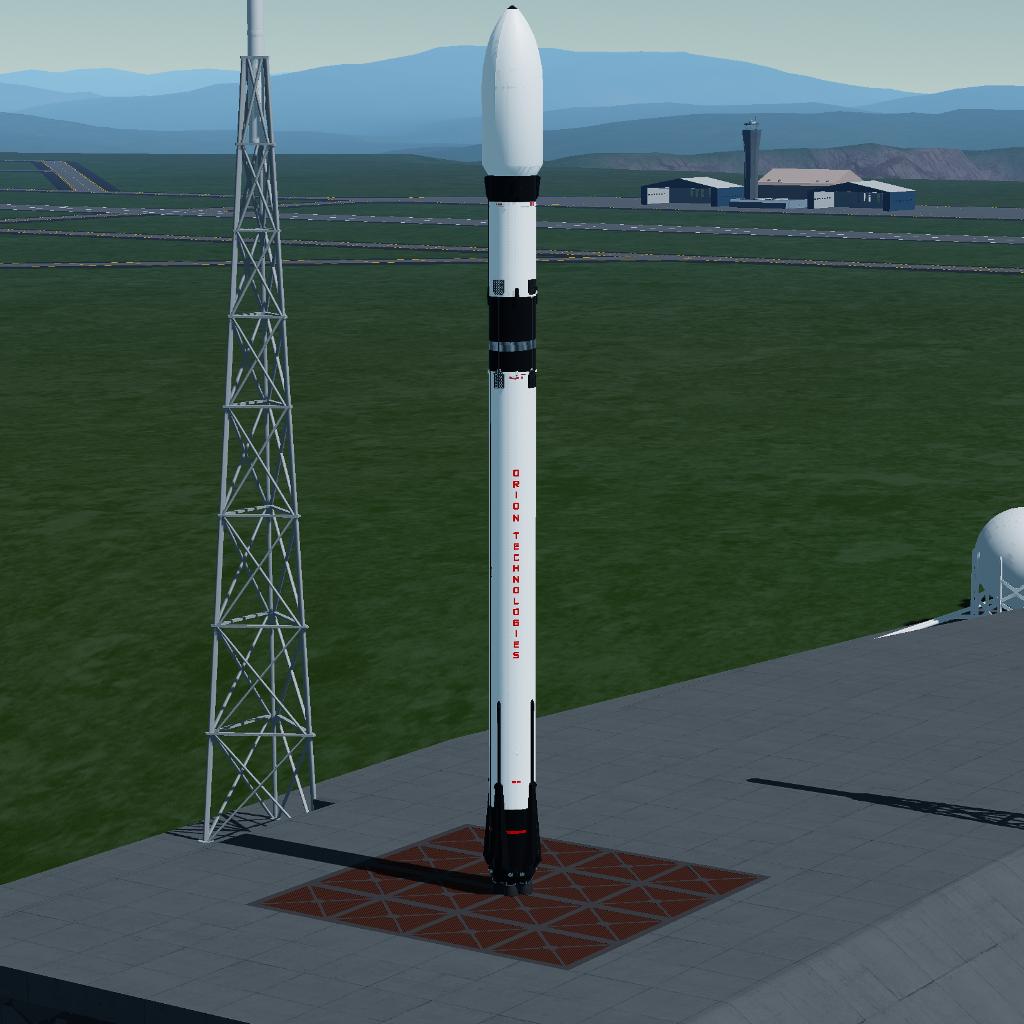
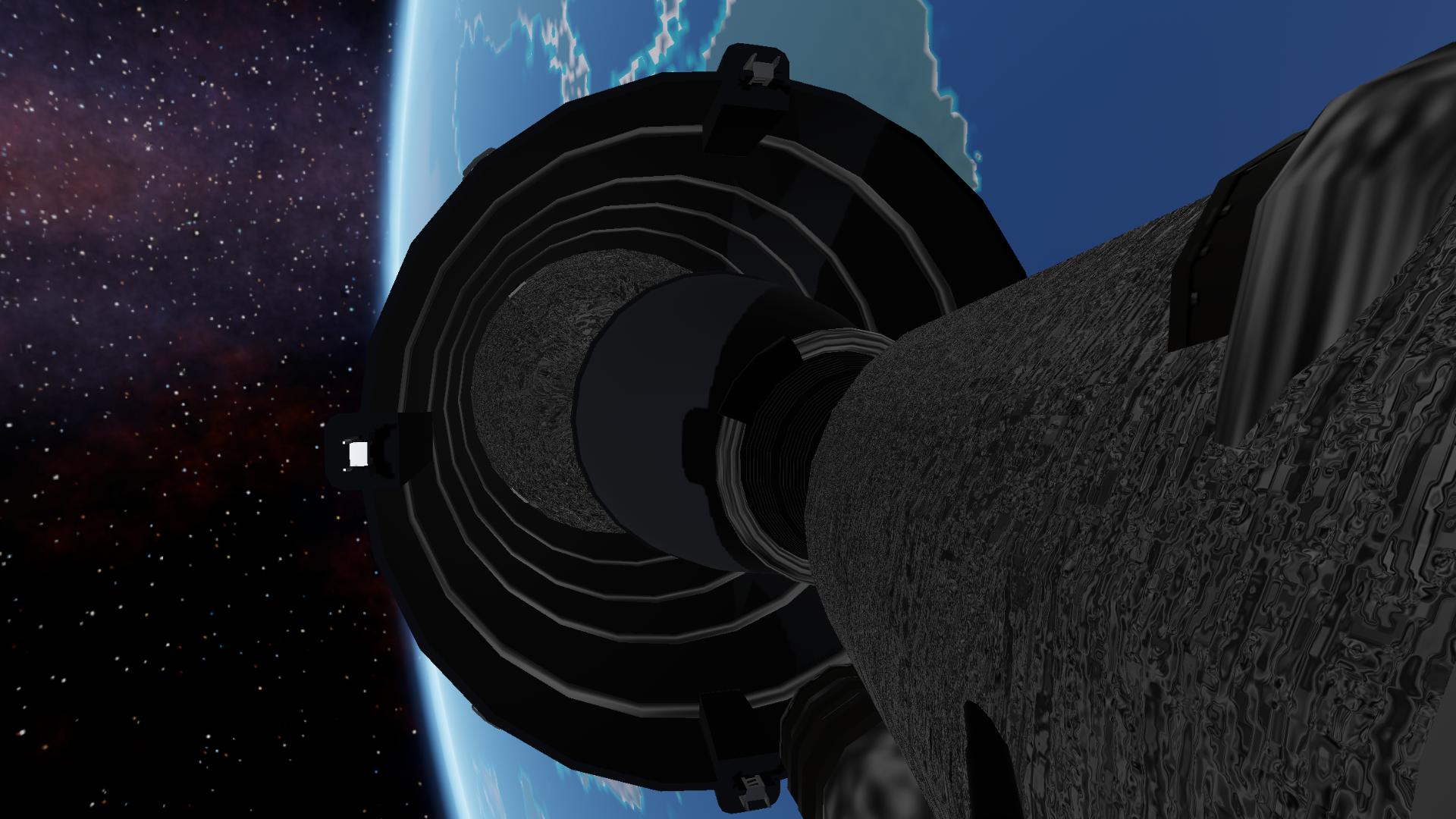
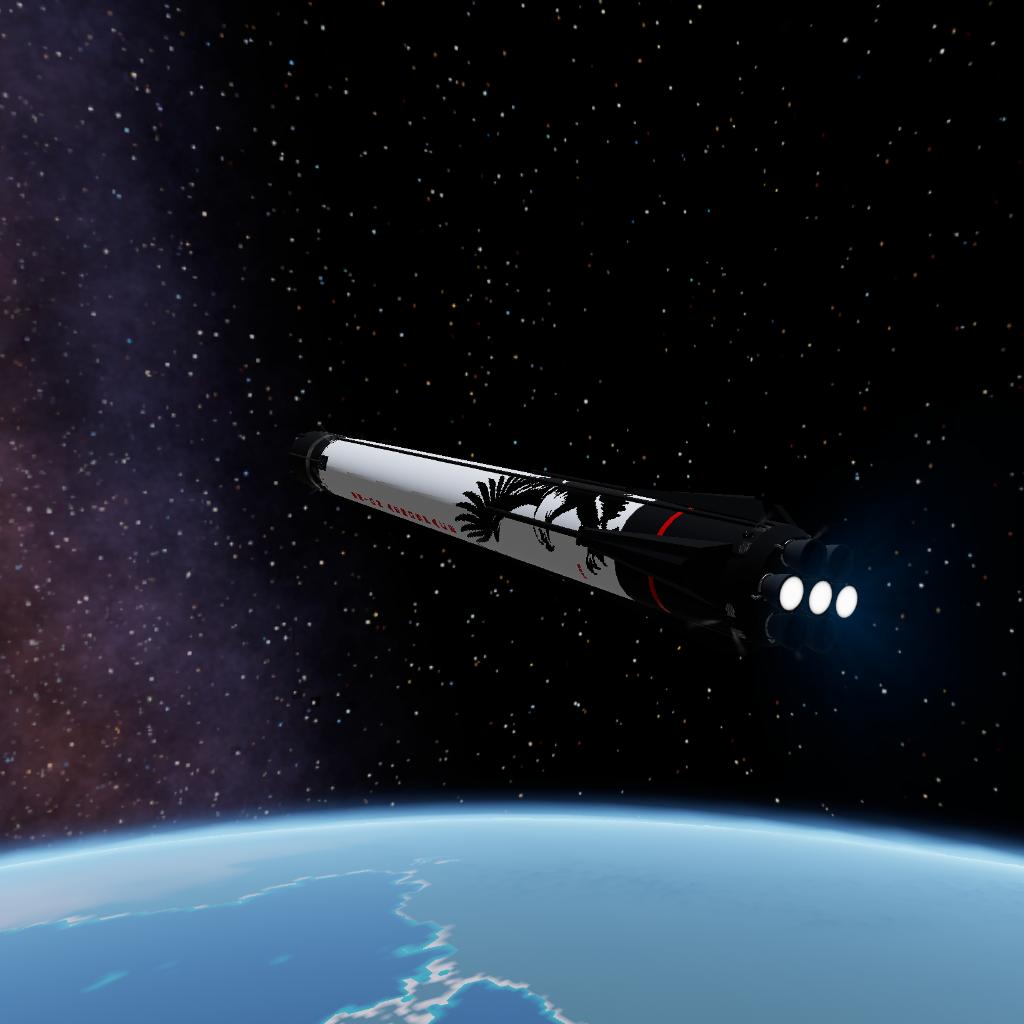
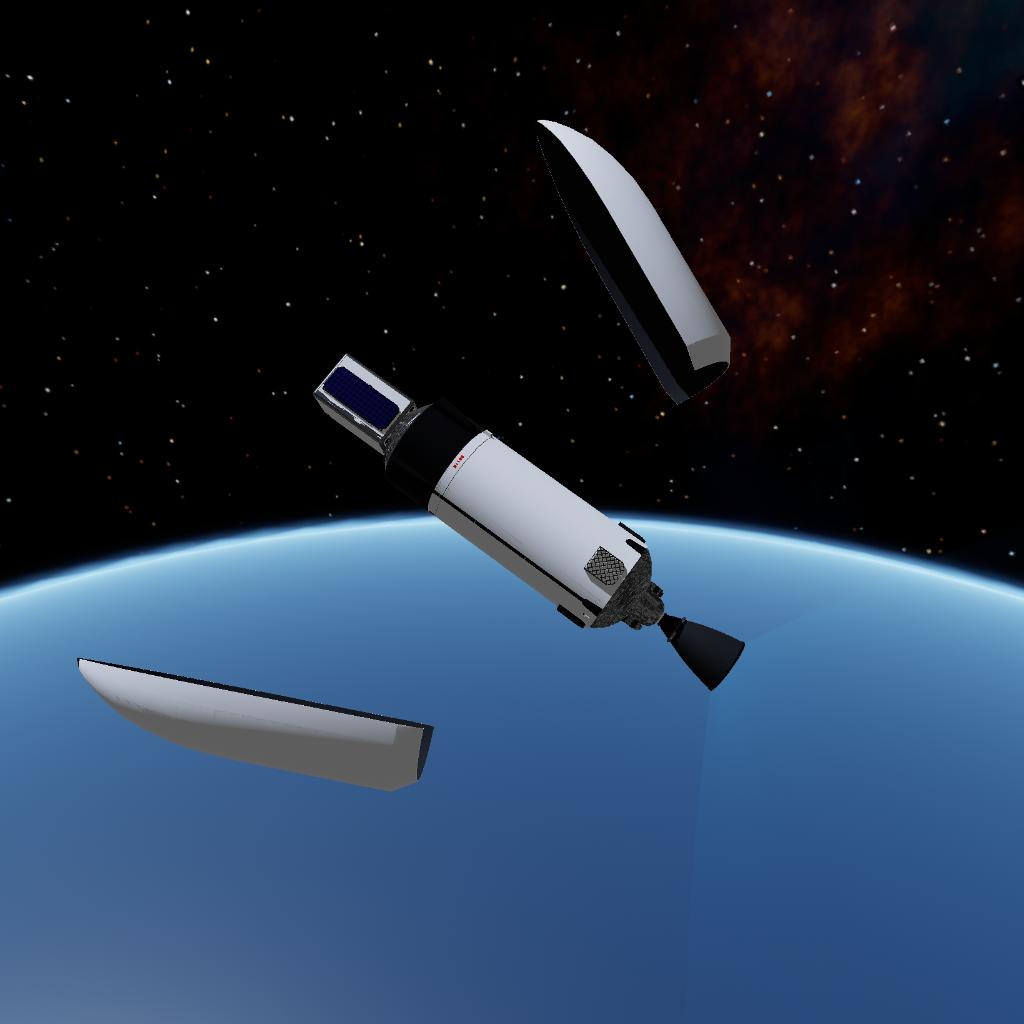

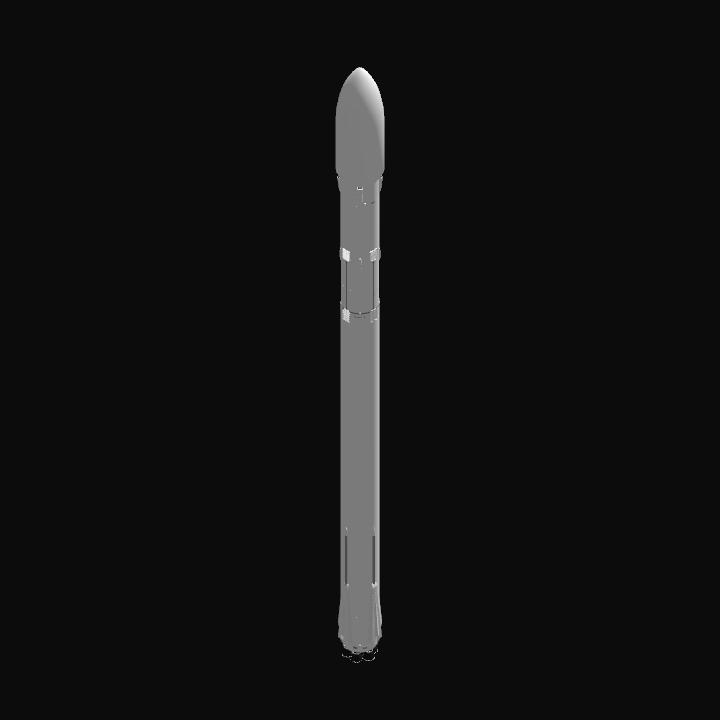
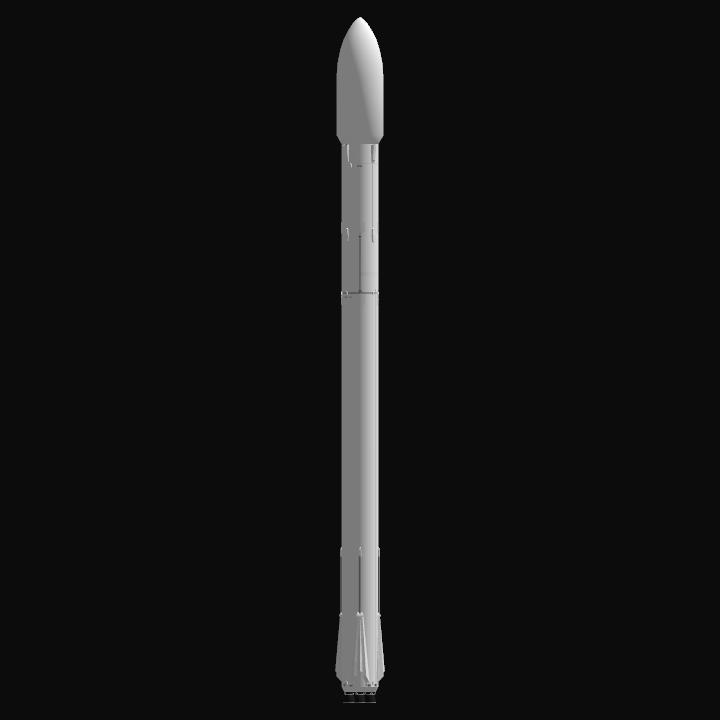

@OACOTEOC, hey thanks!